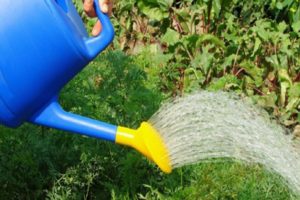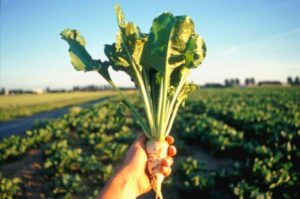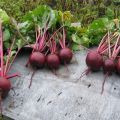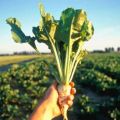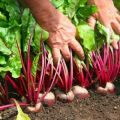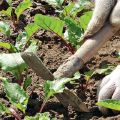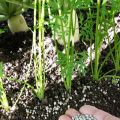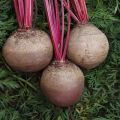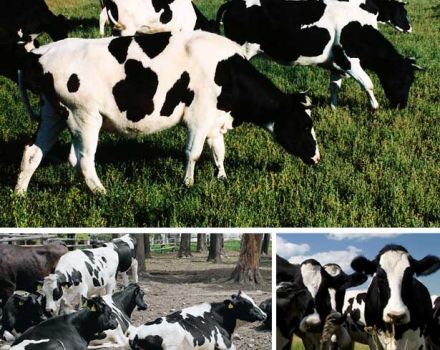Description of the Detroit beet variety, cultivation features and yield
Every year breeders bring out new root crops. Detroit beet was developed in Italy and received a number of differences from other varieties. Due to its taste and high yield, the variety has been recognized by modern gardeners; it is grown in dachas and large farms.
Description of the variety
Detroit beets are table varieties. The root crop ripens early, 100–110 days after the first seedlings emerge. Suitable for planting in greenhouse conditions or open soil. The vegetable has a smooth surface, rounded shape and a rich burgundy pulp without rings. Dimensions are small, weight about 200 g.
Due to its high taste characteristics, the root vegetable is juicy and sweet. The harvested crop can be consumed fresh or left to be stored for the winter. On a land of 100 sq. m can be grown up to 500 kg of harvest. Beets contain a large amount of nutrients and vitamins; they contain up to 14.2% sugar and up to 20.4% dry matter.
Growing
Before sowing, you must first prepare the soil. Beet seed are laid in holes 25 cm deep, into which humus or rotted manure is introduced in advance. In case of planting in soil with high acidity, dolomite flour, lime or ash should be used as an additional fertilizer.
The root crop is planted in April. It is better to sow seeds in the ground where cucumbers, potatoes, onions grew before. The suitable temperature for sowing is 15–20 degrees.
For correct and rapid growth, the beds should be located in a sunny place with good humidity.

Care features
Until the root crops are formed, the seedlings are watered very intensively. In the future, one watering per week is enough. After watering, the land needs loosening. It is important to ensure that the soil is not exposed to drought and moisture. They stop moistening the earth a month before full ripening and harvesting.
To prevent diseases and accelerate ripening, potassium is fed once every 2 weeks. For 1 sq. m requires about 16–20 g of potash fertilizers. After the second leaf grows, thinning is required, removal of weak shoots by 1–2 cm. It is not allowed to leave obvious weeds on the ground.
Advantages and disadvantages
The prevalence of Detroit beets among summer residents is explained by the presence of a large number of comparative advantages. These include:
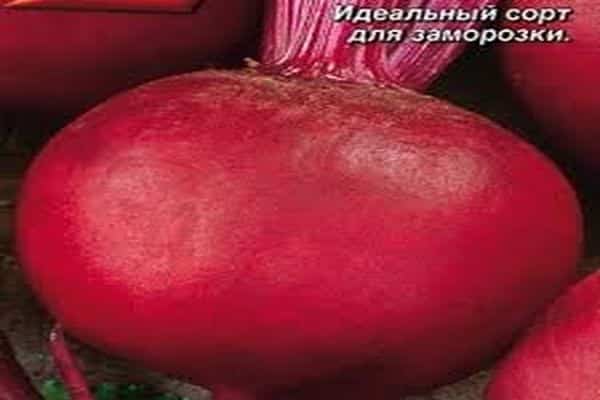
- Consistently high yield. In practice, the seeds of this variety sprout well and ripen in large quantities.
- Disease resistance.Subject to the rules of care and periodic feeding, it is possible to prevent damage by pests and infections.
- Good preservation. Having created suitable storage conditions, you can leave the harvested crop for a long time without fear that it will deteriorate or lose its taste.
- Transportability. The dense surface of the roots allows them to be transported without risk of damage.
- Frost resistance. With a periodic drop in temperature, the seedlings do not die and withstand frosts without harming the crop.
- Uniform germination and ease of cultivation. Beetroot is unpretentious in growing conditions, which significantly reduces labor costs.
There are no obvious flaws in this variety. You can only face problems when growing if you don't care for the plants.
Pests and diseases
Despite the resistance of the root crop to diseases, inexperienced gardeners periodically encounter plant damage. During the growth of Detroit beets, the description of the variety suggests the possibility of infection with white and gray rot, bear and downy mildew. When root crops rot, the root system and lower leaves are affected.
Due to powdery mildew, visible damage to the tops is noticeable. Individuals of the bear gnaw at the roots and stems, which leads to the destruction of plants.
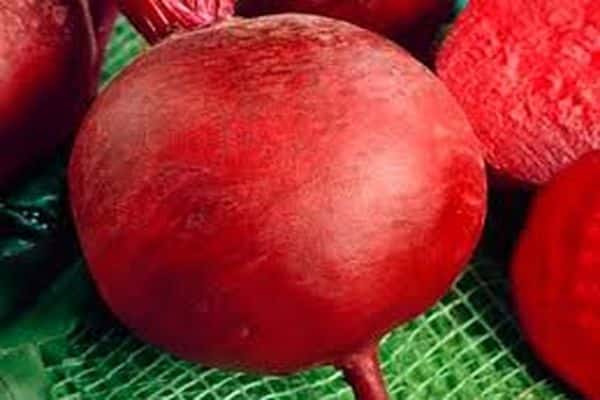
In order to combat diseases and pests, it is necessary to carefully process the aisles in the beds, to destroy weeds in a timely manner and remove the affected plants. If harmful insects or symptoms of disease are detected, the amount of phosphorus-potassium fertilizers should also be increased.
Harvesting and storage
In late summer - early autumn, the harvest season begins. Beetroot is best collected in warm dry weather, when there is no dew and roots have been in the sun for some time. This will prolong the preservation of the crop.
Before removing the beets from the beds, you should pay attention to the condition of the stems - in ripe root crops, they dry out and turn yellow.

As a storage location, you should choose a cool, dark room where there is no excess of moisture. The storage temperature for beetroot is about 2-3 degrees. A common way to store beets is in the cellar along with potatoes. Root crops are laid out in several layers on potato tubers, which transfer excess moisture. You can leave the vegetable for the winter in plastic bags with a capacity of 15–20 kg. The bags must be tied and, in case of condensation formation, opened for a while, leaving a small hole for evaporation.
Gardeners reviews
Marina, Krasnodar:
“Not a picky variety, I have been planting for several seasons in a row. From time to time I come across pests, but spraying helps to get rid of them. I really like the taste of beets - surprisingly rich and sweet. "
Nikolay, Yekaterinburg:
“I read a lot of good reviews about this variety and planted it on several beds for the first time. The harvest was good, there were no problems with growing. I left most of it in the basement for the winter. "
